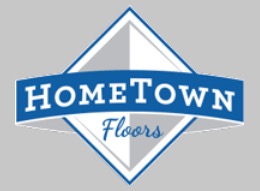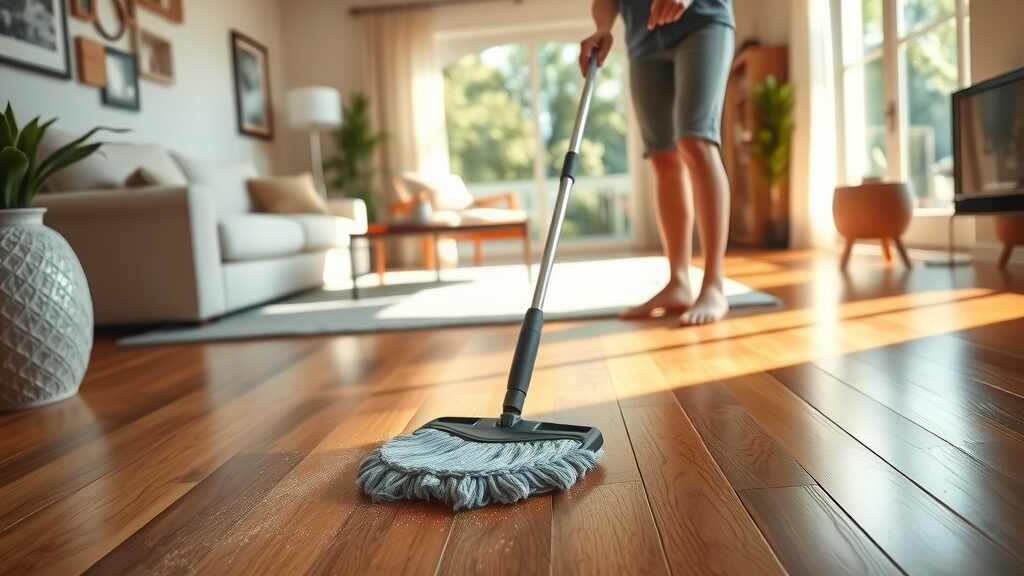Did you know 80% of hardwood floor damage comes from everyday habits? Most homeowners don’t realize how tiny choices—like skipping a day of dusting or not cleaning up a small spill—can lead to scratches, dullness, and even costly repairs. Hardwood floor maintenance tips go far beyond regular sweeping. In this guide, you’ll discover proven floor care routines, expert cleaning hacks, and proactive strategies that will keep your wood floor gleaming and resilient—no matter what life (or your family) brings through the door.
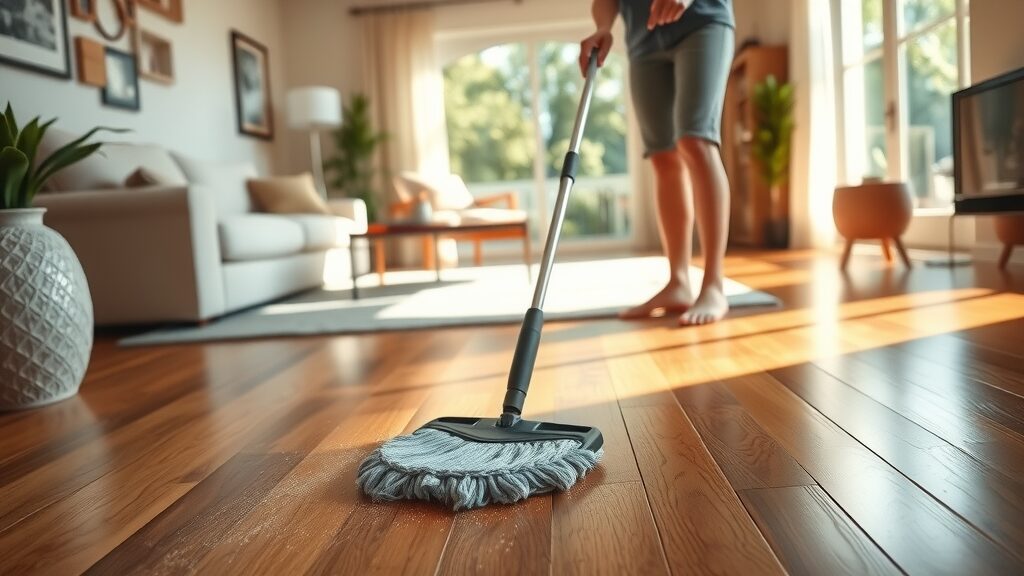
Did You Know? 80% of Hardwood Floor Damage Results From Everyday Habits
Why Understanding Hardwood Floor Maintenance Tips Matters
Learning the essentials of hardwood floor maintenance tips is the secret to a beautiful, lasting wood floor. Nearly every mark, scuff, or gouge happens under our noses—caused by grit on our shoes, puddles left unattended, or aggressive cleaning habits. When you focus on correct hardwood floor care , you’re not just keeping up appearances. You’re also protecting your investment from avoidable repairs and future headaches. Following smart routines extends the life of your hardwood floors , keeping them strong and stylish for generations to come.
- Proper care prolongs your wood floor’s life
- Prevents costly hardwood floor repairs
- Enhances hardwood floor appearance
- Avoid hidden dangers of poor wood floor maintenance
Every action—from your daily dust mop to instant spill cleanup—adds up. Prioritizing small habits over time means less wear and tear and more brilliant shine. Imagine what your living room or hallway would look like after years of consistent wood floor care : no mysterious stains, no scratches in the finish, and an enduring warmth that’s the envy of every guest.
Hardwood Floor Maintenance Tips: Key Principles of Floor Care
Daily and Weekly Wood Floor Care Routines
A strong maintenance routine is at the heart of effective floor care . Start each day by using a microfiber mop —these gentle tools trap dirt and dust without scratching the surface of your wood floor . Sweep high-traffic areas with a dust mop to prevent sharp grit from getting ground into your hardwood flooring . When vacuuming, use only a bare floor or soft brush setting to avoid gouging the finish.
- Use a microfiber mop for gentle dusting
- Sweep with a dust mop to prevent grit
- Vacuum with the right hardwood floor attachment
- Quick guide to daily floor cleaning that protects wood floors
A weekly schedule might include a slightly damp microfiber mopping for a deeper clean, but steer clear of excess water . Small habits, like removing your shoes or shaking out rugs, also cut down on the invisible damage that builds up over time. Consistency here protects your hardwood floors and means you’ll rarely need major repairs or expensive refinishing.
The Best Way to Clean Hardwood Floors: Step-by-Step Hardwood Floor Cleaning
Deep Clean Techniques for Hardwood Floors
Sometimes, regular sweeping isn’t enough. Schedule a monthly or as-needed deep clean for your wood floors . Begin by thoroughly vacuuming, paying special attention to edges and corners. Select a safe hardwood floor cleaner —look for one recommended by your floor or finish manufacturer. Use a microfiber mop lightly misted with the cleaning solution (never saturated), and clean in the direction of the floorboards to avoid streaks. If you’re facing tough stains on wood flooring —such as sticky spills or shoe scuffs—gently rub with a damp microfiber cloth, following up quickly with a dry cloth to avoid excess moisture.
- Selecting a safe hardwood floor cleaner
- Stepwise method for hardwood floor deep clean
- Tips for tough stains on wood flooring
For stubborn marks, avoid abrasive pads or harsh chemicals which can ruin your floor’s finish. If you feel unsure, test your cleaning method in a discreet area first. Remember, regular deep cleaning brings back the luster of your floors without the need for refinishing.
Choosing the Right Wood Floor Cleaner and Tools
Choosing an appropriate wood floor cleaner is critical for maintaining the integrity and shine of your hardwood floors . The best products are pH-neutral, won’t leave residue, and are formulated specifically for hardwood. Avoid multi-surface cleaners or bleach-based solutions, which can strip away the finish and dull the floor over time. A microfiber mop is your best friend for mopping—these trap and lift dirt without pushing it around or scratching delicate surfaces.
- What to look for in a wood floor cleaner
- Avoiding harsh chemicals
- Why a microfiber mop matters for clean hardwood floors
Many homeowners choose DIY cleaning solutions , using diluted vinegar or mild dish soap. Always rinse with a damp (not wet) cloth and dry the area thoroughly. Quality tools like microfiber mops and soft pads make a world of difference in hardwood floor cleaning , ensuring that every clean enhances the appearance—rather than damaging the protective finish.
| Cleaner Type | Key Ingredients | Safe on Polyurethane Finish? | Residue-Free? | Ease of Use |
|---|---|---|---|---|
| Bona Hardwood Floor Cleaner | pH-neutral, water-based | Yes | Yes | Spray and mop |
| Murphy Oil Soap | Vegetable oil soap | Yes* | Can leave film if overused | Dilute, mop, wipe |
| Eco-friendly Vinegar Solution | White vinegar + water | Yes (in moderation) | Yes | Spray light mist, dry quickly |
| Diluted Dish Soap | Gentle soap + warm water | Yes | Yes | Spot clean, mop, wipe dry |
Preventative Hardwood Floor Care: Pro Tips to Keep Wood Floors Like New
Essential Floor Care Habits for Long-Lasting Hardwood Flooring
Smart, consistent habits can preserve your hardwood floors for decades. Place mats and rugs at every entryway to catch dirt and grit before they reach your wood. In high traffic areas —like hallways or by the kitchen sink—a water-absorbent rug can make a dramatic difference. Trim your pets’ nails regularly to prevent scratches, and always use furniture pads under chairs and tables to cushion against scuffs or dents.
- Use mats and rugs in high traffic zones
- Trim pet nails regularly for scratch-free hardwood floors
- Furniture pads for wood floor protection
- Manage humidity to avoid warped hardwood floors
In addition, pay attention to humidity—the natural enemy of hardwood flooring . Sudden shifts between dry and humid conditions cause warping and gaps . Keep your indoor climate stable with a humidifier in winter and a dehumidifier in summer. These practices, along with mindful cleaning, form the backbone of elite wood floor care and keep your floors as dazzling as the day they were installed.
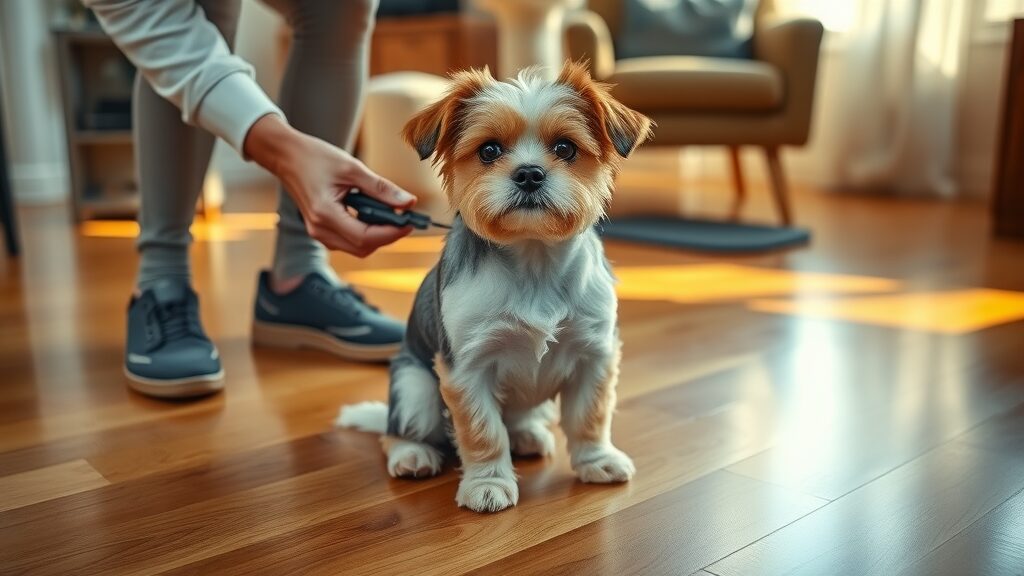
Common Mistakes in Hardwood Floor Maintenance and How to Avoid Them
- Wet mopping wood floors
- Using abrasive cleaning tools
- Ignoring spills on hardwood floors
- Overusing hardwood floor cleaner
Avoid the four most frequent missteps that cause headaches for homeowners. First, never wet mop your hardwood floor —excess water seeps between planks, causing swelling, staining, or even rot. Second, abrasive tools like steel wool or stiff scrub brushes scratch and dull even the toughest finishes. Third, ignoring spills—even water—can lead to warped spots and unsightly stains; always wipe up liquids immediately. Finally, don’t overuse your hardwood floor cleaner , as residue buildup can make your wood look cloudy or sticky.
“A single cleaning error can cost hundreds in floor repair. Consistency with the right technique is your best investment for hardwood floors.”
By sticking to recommended hardwood floor maintenance tips and resisting shortcuts, you’ll prevent avoidable damage. Remember, careful daily attention is less time-consuming—and far less expensive—than sanding, refinishing, or replacing sections of damaged wood floors .
Expert Hardwood Floor Maintenance Tips for Specialized Situations
Care for Hardwood Floors in Kitchens, Entryways, and Pet Areas
High-risk zones like kitchens, entryways, and pet spaces need extra floor care. In the kitchen, food splashes and water spills are daily battles—immediately wipe up messes and place a washable rug near prep areas and sinks. For entryways, use both an outdoor and indoor mat to trap sand, grit, and moisture before they ever touch your wood flooring .
- Kitchen hardwood floor care against food stains
- Entryway mat placement to reduce dirt
- Strategies for homes with energetic pets
Pet owners should consider designated napping or play spots (with mats), and place scratching posts away from main traffic areas . Regularly sweeping up pet hair and dander prevents it from becoming abrasive, while a strict no-shoes policy further protects your hardwood floors . Small strategies like these add up to years of preserved beauty.
Reviving Aged Hardwood Floors: Rejuvenation and Restoration
As your hardwood floors age, you might notice dullness, faded patches, or minor scratches. Before calling in the pros, try buffing the surface with a microfiber cloth and using a specialized wood floor restorer —these products can refresh gloss and hide small scratches without sanding. For deeper blemishes, use a wood filler or marker designed for your floor’s color.
- When to consider hardwood floor refinishing
- Minor scratch fixes without sanding
- Professional vs. DIY wood floor restoration
If the finish is severely worn—especially in high-traffic areas —professional refinishing may be required. Though more costly, skilled refinishers can sand and reseal the surface, restoring a like-new glow. Don’t forget to ask about dustless sanding and low-VOC finishes if allergies or eco-friendliness are important to your family.
Seasonal Wood Floor Care and Maintenance Schedules
Spring and Fall: Deep Clean and Inspect Hardwood Floors
Seasonal changes present a valuable opportunity for deep clean routines and floor inspections. Each spring and fall, invest in a thorough vacuum and mop, then check closely for signs of moisture damage or gaps—especially around windows, doors, and underneath rugs. Use a flashlight to examine seams for swelling or separating, and address any issues promptly.
- Annual or bi-annual deep clean checklist
- Checking for hardwood floor moisture damage or gaps
Dust baseboards, move furniture gently, and monitor for dullness or scratches that may not be immediately visible. Spot treat minor stains and use a manufacturer-approved floor polish as needed. A proactive approach every few months keeps your wood floors in world-class shape year-round.
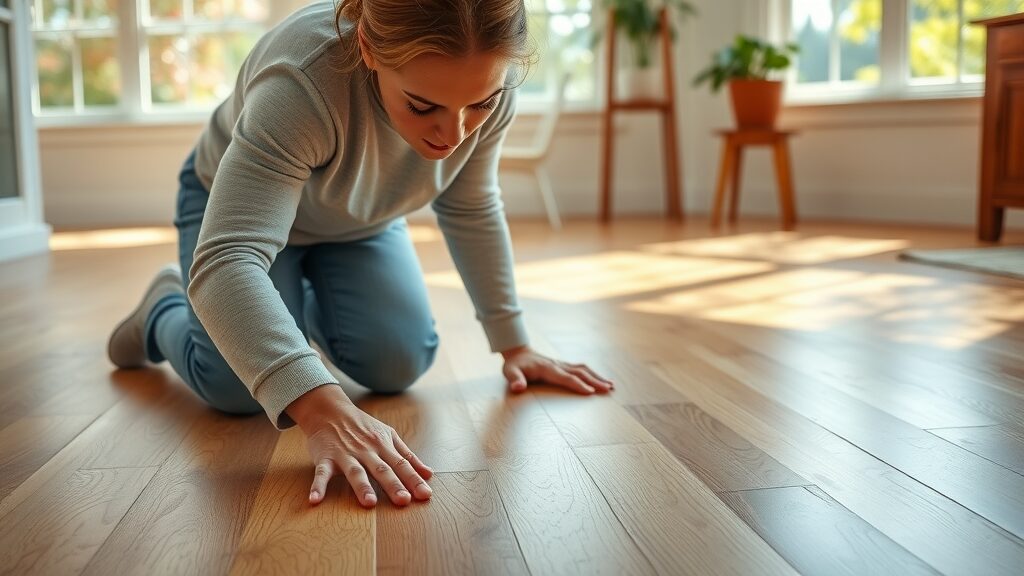
Winter and Summer Adjustments for Wood Flooring
Cold, dry winters and hot, humid summers can wreak havoc on hardwood flooring . In winter, use a humidifier to prevent cracks and shrinking, while placing trays or mats at every entrance catches salt and melted snow before it harms your floors. In summer, a dehumidifier helps avoid swelling and cupping, while frequent gentle dust mopping keeps grit from becoming embedded.
- Humidity control during season changes
- Salt and water protection for wood floors in winter
Always adjust your cleaning and HVAC routines according to the season, protecting both the appearance and structure of your hardwood floors . If flooring is exposed to repeated puddles of water or extreme shifts in temperature and humidity , problems can escalate fast—vigilant care means lasting visual appeal and fewer repair bills.
Eco-Friendly Hardwood Floor Maintenance Tips
Natural and Non-Toxic Cleaners for Hardwood Floors
Caring for your floors shouldn’t come at the expense of your family’s health or the environment. Many eco-friendly hardwood floor maintenance tips focus on gentle but effective cleaning using household staples. Create a homemade solution by mixing one cup of distilled white vinegar into a gallon of warm water. Use a lightly dampened microfiber mop—never soaking wet.
- Safe ingredients for homemade hardwood floor cleaner
- Benefits of vinegar solutions and when not to use them
While vinegar works well for cleaning, avoid using it on floors finished with wax or oil, as it can strip away natural oils. Alternatively, a drop or two of mild, castile soap in warm water is safe for most finishes. Eco-conscious homeowners will also appreciate reusable microfiber mops and natural rubber furniture pads, which combine sustainability with outstanding cleaning results.
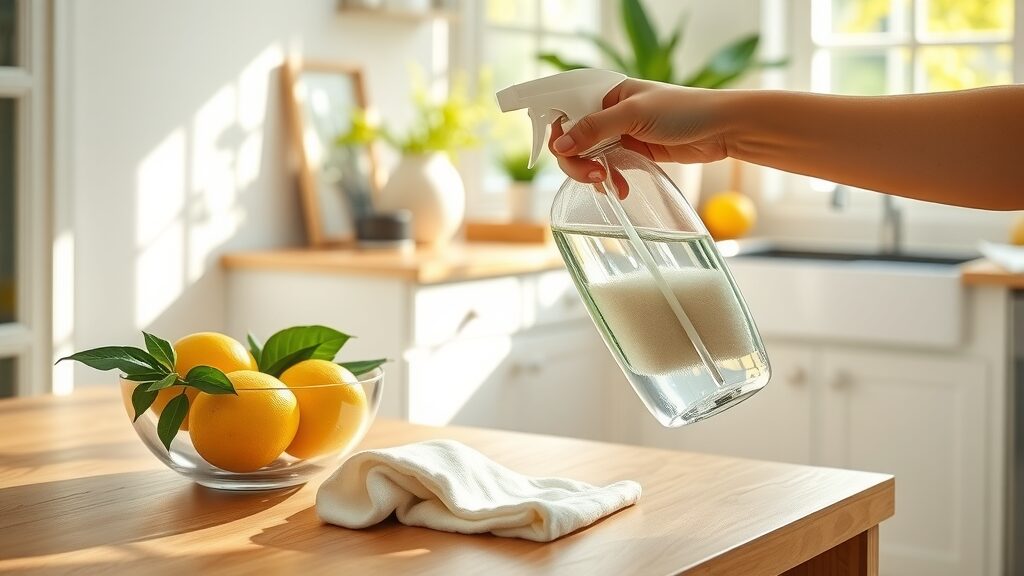
Troubleshooting Hardwood Floor Issues: When to Call a Professional
Identifying Floor Damage: Water, Scratches, and Fading
Every homeowner faces occasional floor damage, but knowing when to address issues yourself versus calling a professional is key. Water stains, deep scratches, or areas of fading are often caused by spills, pet accidents, or direct sunlight. Minor scuffs may be remedied with a matching wood touch-up pen or by buffing gently with a microfiber cloth, while shifting rugs regularly can prevent permanent discoloration.
- Common causes of wood floor discoloration
- What minor damage looks like on hardwood flooring
- Thresholds for DIY vs. professional hardwood floor care
If you spot buckling, widespread peeling, or boards lifting away from the subfloor, it’s time to call an experienced flooring contractor. Letting these issues linger can lead to more serious structural damage or costly repairs down the line. Professionals have specialized equipment for assessing moisture, repairing deep gouges, and restoring finish safely.
People Also Ask: Expert Answers to Common Hardwood Floor Maintenance Questions
What is the best maintenance for hardwood floors?
- The best hardwood floor maintenance tips involve daily dusting with a microfiber mop, weekly cleaning with a gentle floor cleaner, and addressing spills immediately to prevent damage.
What is the best thing to put on your hardwood floors?
- The best products for wood floors are pH-neutral hardwood floor cleaners and protective area rugs or mats in high-traffic zones to minimize wear.
What is the best thing to clean wood floors with?
- Use a dedicated wood floor cleaner or a diluted mild soap solution with a microfiber mop for effective hardwood floor cleaning without residue.
Should you wet mop hardwood floors?
- Avoid wet mopping hardwood floors—excess water can damage the finish and cause warping. Instead, slightly dampen a microfiber mop for a safe clean.
Essential FAQs for Effective Hardwood Floor Maintenance
- How often should I deep clean my hardwood floors? Deep clean your floors at least once every season or whenever you notice a buildup of grime, especially in high-traffic areas.
- What are signs my hardwood floors need professional care? Deep scratches, sustained water damage, persistent dullness, or boards lifting away from the subfloor signal it’s time to consult an expert.
- Are steam mops safe for wood flooring? Steam mops are not recommended for hardwood as excessive moisture can permeate and damage the floorboards.
- How can I restore shine to dull hardwood floors? Use a recommended wood floor polish, and follow the manufacturer’s directions; do not over-polish as this may cause buildup.
Recap: Key Hardwood Floor Maintenance Tips to Extend Floor Life
- Immediate dirt removal
- Correct cleaning techniques
- Regular floor inspection
- Proactive floor care habits
Ready to Protect Your Hardwood Floors? Contact the Floor Care Experts
- Have questions about your flooring project? Speak with a friendly pro—call at (636) 244-4951 or browse our work at www.hometownfloorsonline.com .
Flooring Installation Services in O’Fallon, St. Charles County & Surrounding Areas
HomeTown Floors is proud to serve homeowners and businesses with professional flooring installation, hardwood, vinyl plank, carpet, and tile services throughout O’Fallon, St. Charles County, and the Greater St. Louis area. Our service areas include Ballwin, Chesterfield, Des Peres, Eureka, Fenton, Frontenac, Innsbrook, Jefferson County, Kirkwood, Lincoln County, Manchester, St. Charles, St. Peters, Sunset Hills, Town & Country, Union, Washington, Weldon Spring, Wentzville, and Wildwood.
We specialize in flooring design consultations, product selection, and expert installation to give your home or business a beautiful, long-lasting finish. Trust HomeTown Floors for 5-star flooring service and local expertise that sets us apart in Missouri.
To further enhance your hardwood floor maintenance routine, consider the insights from these authoritative sources:
- “Experts reveal the 3 habits that are warping, scratching, and damaging your hardwood floors – and what to do instead” ( homesandgardens.com ) highlights common mistakes such as dragging furniture without protective pads, using harsh cleaners, and improper vacuuming techniques. Implementing their recommended practices can prevent costly repairs and extend the life of your flooring.
- “Hardwood Floor Care & Maintenance – Tips & Tricks” ( originalhardwood.com ) offers practical advice on regular cleaning routines, the importance of using appropriate cleaning products, and strategies to protect your floors from everyday wear and tear.
By integrating these expert recommendations into your maintenance plan, you can ensure your hardwood floors remain beautiful and durable for years to come.
